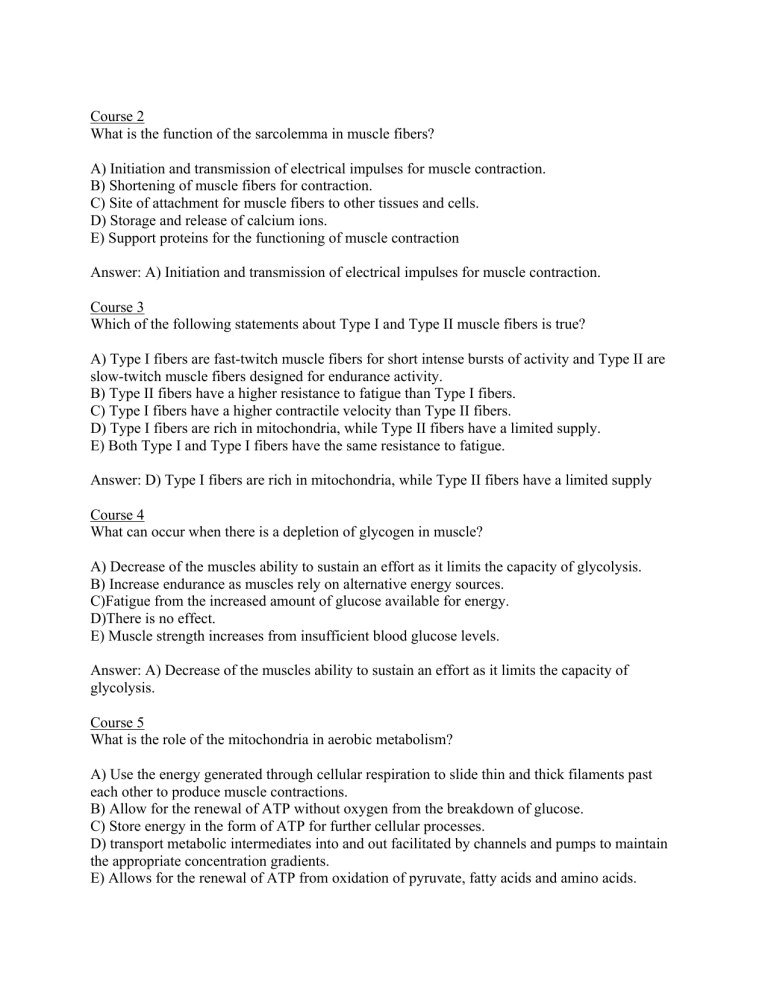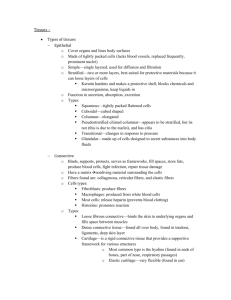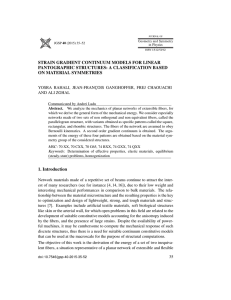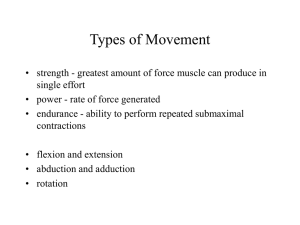
Course 2 What is the function of the sarcolemma in muscle fibers? A) Initiation and transmission of electrical impulses for muscle contraction. B) Shortening of muscle fibers for contraction. C) Site of attachment for muscle fibers to other tissues and cells. D) Storage and release of calcium ions. E) Support proteins for the functioning of muscle contraction Answer: A) Initiation and transmission of electrical impulses for muscle contraction. Course 3 Which of the following statements about Type I and Type II muscle fibers is true? A) Type I fibers are fast-twitch muscle fibers for short intense bursts of activity and Type II are slow-twitch muscle fibers designed for endurance activity. B) Type II fibers have a higher resistance to fatigue than Type I fibers. C) Type I fibers have a higher contractile velocity than Type II fibers. D) Type I fibers are rich in mitochondria, while Type II fibers have a limited supply. E) Both Type I and Type I fibers have the same resistance to fatigue. Answer: D) Type I fibers are rich in mitochondria, while Type II fibers have a limited supply Course 4 What can occur when there is a depletion of glycogen in muscle? A) Decrease of the muscles ability to sustain an effort as it limits the capacity of glycolysis. B) Increase endurance as muscles rely on alternative energy sources. C)Fatigue from the increased amount of glucose available for energy. D)There is no effect. E) Muscle strength increases from insufficient blood glucose levels. Answer: A) Decrease of the muscles ability to sustain an effort as it limits the capacity of glycolysis. Course 5 What is the role of the mitochondria in aerobic metabolism? A) Use the energy generated through cellular respiration to slide thin and thick filaments past each other to produce muscle contractions. B) Allow for the renewal of ATP without oxygen from the breakdown of glucose. C) Store energy in the form of ATP for further cellular processes. D) transport metabolic intermediates into and out facilitated by channels and pumps to maintain the appropriate concentration gradients. E) Allows for the renewal of ATP from oxidation of pyruvate, fatty acids and amino acids. Answer: E) Allows for the renewal of ATP from oxidation of pyruvate, fatty acids and amino acids. Course 6 What is the main difference between venules and arterioles? A) Venules carry oxygenated blood and arterioles carry deoxygenated blood. B) Arterioles have thicker walls than venules since they need to withstand more pressure. C) Venules regulate blood flow to specific areas of the body and arterioles transporting blood from the capillaries back to the veins. D)Venules are smaller blood vessels than arterioles. E) Arterioles contain valves that prevent blood from flowing backwards but venules do not. Answer: B) Arterioles have thicker walls than venules since they need to withstand more pressure.







